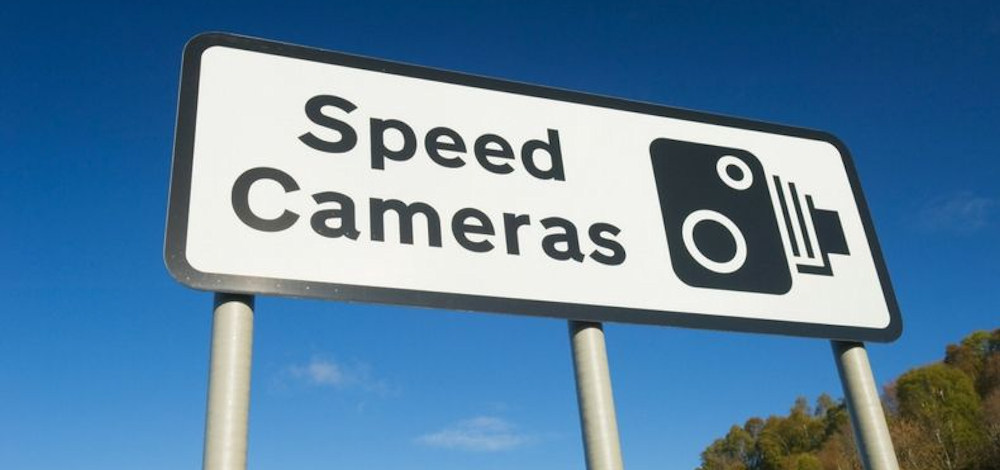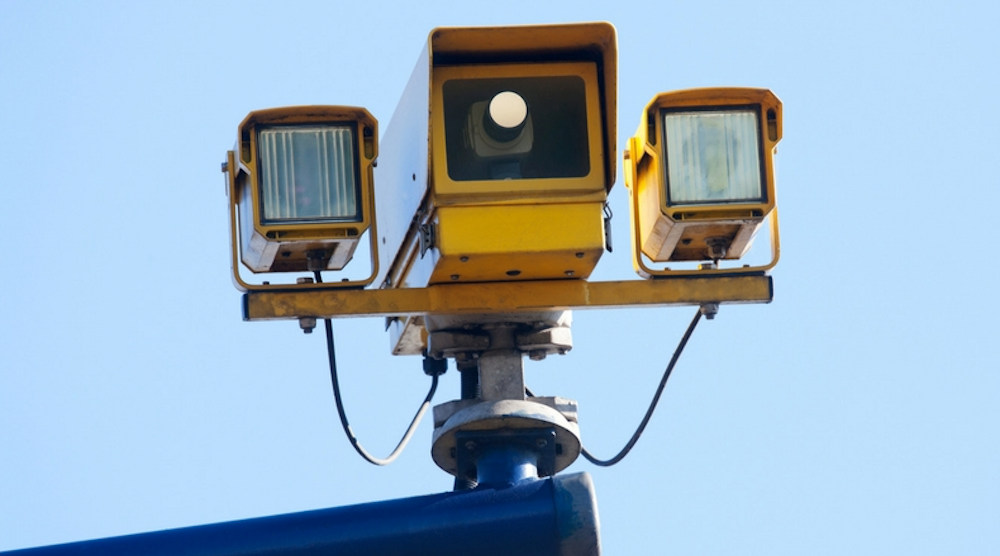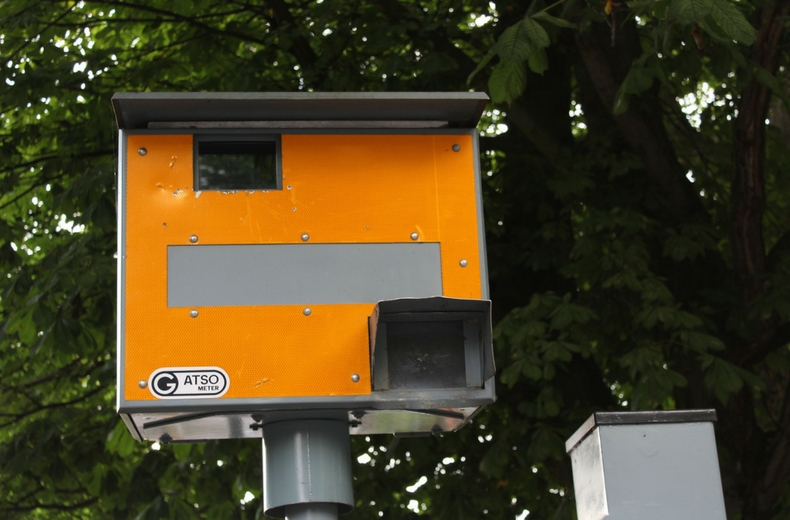All you need to know about speed cameras

Speed cameras, or safety cameras, to use the official terminology, are one of the most contentious points of motoring for many drivers with nearly a million motorists caught speeding in Britain each year. Love or loathe them they are designed to reduce speeding and curb dangerous driving and of course they also raise revenue via the speeding fines issued.
Why do we have them?
Figures from the Royal Society for the Prevention of Accidents (RoSPA) reveal that excessive speed contributes to 12% of all injuries, 15% of serious injuries and 26% of deaths on the road.
The organisation reveals that In 2015, 222 people were killed in crashes involving someone exceeding the speed limit and a further 167 people died when someone was travelling too fast for the conditions. RoSPA argues that drivers travelling at high speed are less likely to react to what is happening around them meaning it will take longer for the vehicle to stop and the crash will be more severe, causing greater injury to the occupants and any pedestrian or rider hit by the vehicle.
To help combat this speed cameras are often placed in notoriously accident-prone areas, to have the most significant impact on reducing speed related injuries and deaths. RoSPA believes that cameras are a very effective way of persuading drivers not to speed, and thereby reducing the number of
people killed and seriously injured. They refer to an independent review conducted by University College London and PA Consulting of more than 4,000 safety cameras over a four year period which showed conclusively that cameras significantly reduce speeding and collisions, and cut deaths and serious injuries at camera sites.
Britain's first speed camera was installed on the A316 over Twickenham bridge in 1992. The road had a speed limit of 40mph and the Gatso device was set to trigger for vehicles travelling at 60mph. After only 22 days after being turned on, it caught nearly 23,000 drivers!
Whether you acknowledge their benefits or not, you'll have to learn to live with them as the numbers being deployed are on the increase, particularly with more stretches of "smart motorway" in operation.
Best aware of your speed
As van drivers it is advisable to know all you can about them, but also be fully aware of the speed limit rules which apply to light commercial vehicles.
The latest generation of speed cameras are much smarter than their earlier counterparts. Gone are the days when cameras simply monitored your speed as they can now use number plate recognition to identify which type of vehicle you’re driving and crucially what your maximum speed should be for that type of road. The speed limit rules are different for vans. For instance, on single carriageways showing the national speed limit signs, cars are permitted to drive at a maximum of 60mph but for vans (under 3.5 tonnes), that limit reduces to 50mph. Likewise, cars can drive at up to 70mph on dual carriageways, yet vans must not exceed 60mph.
Fixed speed cameras
Fixed speed cameras are located at selected roadside sites, typically a yellow box on a grey pole. Despite them being instantly recognisable, visible from afar and always signposted - drivers still manage to get caught by them. Usually, there are white markings on the road to help calculate vehicles’ speed and give extra warning to drivers of the camera’s presence.
Mobile speed cameras
Mobile speed cameras are moved from site to site according to local accident data and are usually operated by local police forces.
There are many forms of mobile speed camera but most commonly these are vans specially fitted with the latest speed detection and imaging technology. Specialist police officers use laser detection to measure speed with a beam bouncing off the target vehicle in less than half a second to provide an accurate reading. Mobile camera units can generally be found parked at the roadside or on an overbridge.
It is up to the discretion of the individual operating the camera to issue you a fine if you driving over the legal speed limit.
There are also mobile speed cameras used as part of safety camera partnership teams and speed safety campaigns, however you will have to find the relevant local authority or safety partnership website to find their locations.
Average speed cameras

Newer, average speed cameras involve pairs (or networks) of cameras, which are used to measure vehicles’ average speeds along a clearly defined and accurately measured stretch of road that could be anywhere between a few hundred metres and many miles in length. Automatic Number Plate Recognition software is used to identify and record vehicles at the start and end of the enforced area of road with their entry and exit times, which, together with the known distance travelled, is used to calculate an average speed. If a vehicle is travelling faster than a pre-set threshold, its details and a colour image are digitally recorded. Digital cameras can send this information directly to a computer that generates the penalty notices. Average speed cameras are clearly distinguishable from fixed speed cameras, and are usually mounted on gantries or cantilever poles high up to enable the automatic number recognition cameras to work effectively. The most visible use of these cameras is at roadwork schemes with temporary lower speed limits, where they have become a common sight over the last decade. Average speed cameras were typically used to enforce speed along higher speed routes, but are now being used to measure speeds in urban 30mph and 40mph routes, as in Birmingham.
Variable speed cameras
Variable speed cameras work in a similar way to average speed cameras, but they’re unlikely to be in operation 24/7. They tend to be used on smart motorways when the speed limit is lowered to ease congestion or in the event of poor weather or some other hazard.
The M1 is just one of a number of stretches being converted into smart motorways alongside the M6, M25, M3, M20 and M5.
The speed cameras are situated on the overhead gantries and the limit will be displayed on a series of signs.
Can I drive 10% + 2 above the speed limit and not get caught?
By the letter of the law, if you're as little as 1mph over the speed limit then you could be issued with a ticket and handed penalty points on your license.
However, guidance provided by the NPCC (National Police Chiefs Council, formally ACPO, Association of Chief Police Officers), suggests that officers do not seek prosecution of a driver until they have exceeded the speed limit by 10%, plus 2mph. Which means on a motorway, cops are unlikely to take out enforcement below 79mph.
How do I know if I've been caught speeding?
If you're caught by a speed camera rather than a traffic officer, you have to be sent a Notice of Intended Prosecution within 14 days.
You will be sent either a court summons, a Fixed Penalty Notice or an offer to attend a speed awareness course.
This will be sent to the registered keeper of the car - if you've heard nothing after 14 days, the chances are you're in the clear.
What happens at a speed awareness course?
The National Speed Awareness Course scheme is designed to re-educate drivers to prevent reoffending. It is sometimes offered in place of penalty points and a fine if a driver has been within certain limits. It will not be offered to any drivers who have attended a course within the last three years.
It takes the form of an informal workshop with two trainers providing 24 attendees with information to help them recognise speed limits, understand the consequences of speeding and provide information to ensure it doesn’t happen again in the future.
What are the potential penalties for speeding?
From April 2017, fines of up to £1000 can be given for speeding, rising to £2500 on a motorway. The level of fine and the number of points added to your licence depends on the seriousness of the speeding. Drivers within two years of passing their tests will be given six points on their licence. An accumulation of 12 points will result in a driving ban.
There are three bands of speeding fine.
Band A fines are given for minor breaches of anything from 1mph to 10mph over the speed limit. For example driving between 31mph to 40mph in a 30mph zone. This will result in three points on your licence and a fine approximately 50% of your weekly income.
Band B is more serious and will be given if you are travelling between 31mph and 40mph in a 20mph zone or up to 100mph in a 70mph zone. In this band, you can expect a disqualification of up to 28 days or four to six points added to your licence. The fine will be based on 100% of your weekly income.
Band C fines are awarded for the worst driving offence. For example if you were travelling at a speed of 41mph or more in a 20mph zone or going above 100mph in a 70mph zone. The fine will be based on 150% of your weekly income. Six penalty points can also be given and a disqualification of up to 56 days.
Other factors may be considered in order to determine the level of fine which could include any previous convictions, the weather conditions, and the location of the offence.


.jpg)














